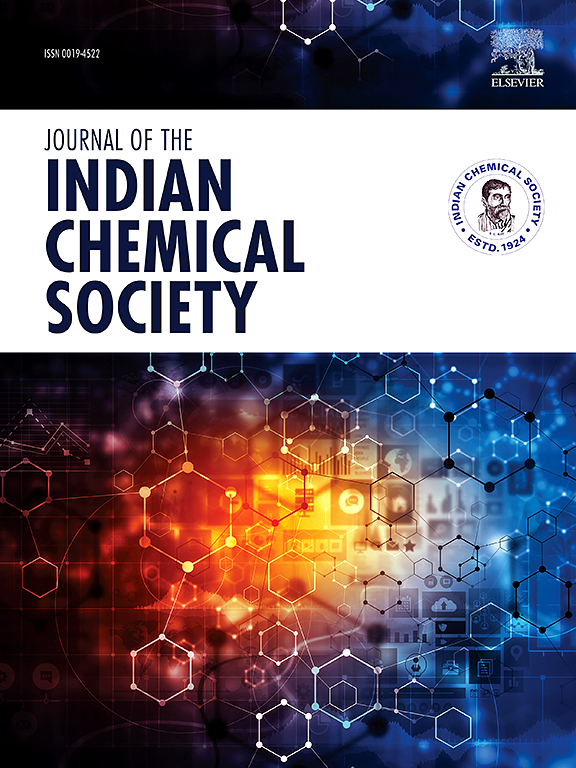新型抗癌药物吡唑衍生物的光谱学、量子计算研究、光收集效应、硅生物学评价和分子对接
IF 3.2
4区 化学
Q2 CHEMISTRY, MULTIDISCIPLINARY
引用次数: 0
摘要
该研究的主要目的是开发和合成1,3-二苯基- 1h -吡唑-4-乙醛的杂化吡唑衍生物,并通过分子对接和DFT模拟评估其抗癌潜力。采用DFT/B3LYP泛函和6-311+G (d, p)基集,利用量子力学方法对标题化学进行了计算描述。提出了理论和实验傅里叶变换红外研究,并对振动波数进行了缩放。研究内容包括前沿分子轨道(FMO)的检测、HOMO-LUMO能隙的计算、基于时间依赖密度泛函理论(TD-DFT)的紫外光谱建模以及光收集效率(LHE)的评估等。计算了自然键轨道和非线性光学(NLO)性质。使用多技术计算方法,包括用于轨道分布分析的LOL,用于检测非共价相互作用和可能的化学反应热点的RDG分析,用于电子配对和定位研究的ELF分析,用于电子密度位移检测的电荷转移分析,以及用于电荷分布图绘制的MEP分析,找到标题分子的反应位点。生物活性评价表明标题分子符合Lipinski规则,并且在药物相似性方面也很好。此外,分子对接研究显示促进蛋白质与配体结合的相互作用,表明该物质具有抗癌特性。本文章由计算机程序翻译,如有差异,请以英文原文为准。

Spectroscopic, quantum computational investigation, light harvesting effect, In silco biological evaluations and molecular docking of novel pyrazole derivative - A potential anti-cancer agent
The study's main objectives were to develop and synthesize hybrid pyrazole derivatives from 1,3-diphenyl-1H-pyrazole-4-carbaldehyde and assess their anticancer potential using molecular docking and DFT simulations. The DFT/B3LYP functional and 6-311+G (d, p) basis set were used to computationally describe the title chemical utilizing quantum mechanics method. Theoretical and experimental FT-IR studies were presented, and vibrational wavenumbers scaled. The research included a number of investigations, such as the examination of Frontier Molecular Orbital (FMO), the computation of the HOMO-LUMO energy gap, the Modeling of UV spectra using Time-Dependent Density Functional Theory (TD-DFT), and the assessment of Light Harvesting Efficiency (LHE). The properties of Natural Bond Orbital and Non-Linear Optical (NLO) were calculated. The title molecule's reactive sites were found using a multi-technical computational approach that included LOL for orbital distribution analysis, RDG analysis for examining non-covalent interactions and possible chemical reactivity hotspots, ELF for electron pairing and localization studies, charge transfer analysis for electron density shift examination, and MEP analysis for charge distribution mapping. Bioactivity evaluation indicated that the title molecule does conform to Lipinski's rule and is also quite good in terms of drug-likeness. Additionally, molecular docking investigations showed encouraging protein-ligand binding interactions, indicating that the substance has anticancer properties.
求助全文
通过发布文献求助,成功后即可免费获取论文全文。
去求助
来源期刊
CiteScore
3.50
自引率
7.70%
发文量
492
审稿时长
3-8 weeks
期刊介绍:
The Journal of the Indian Chemical Society publishes original, fundamental, theorical, experimental research work of highest quality in all areas of chemistry, biochemistry, medicinal chemistry, electrochemistry, agrochemistry, chemical engineering and technology, food chemistry, environmental chemistry, etc.

 求助内容:
求助内容: 应助结果提醒方式:
应助结果提醒方式:


